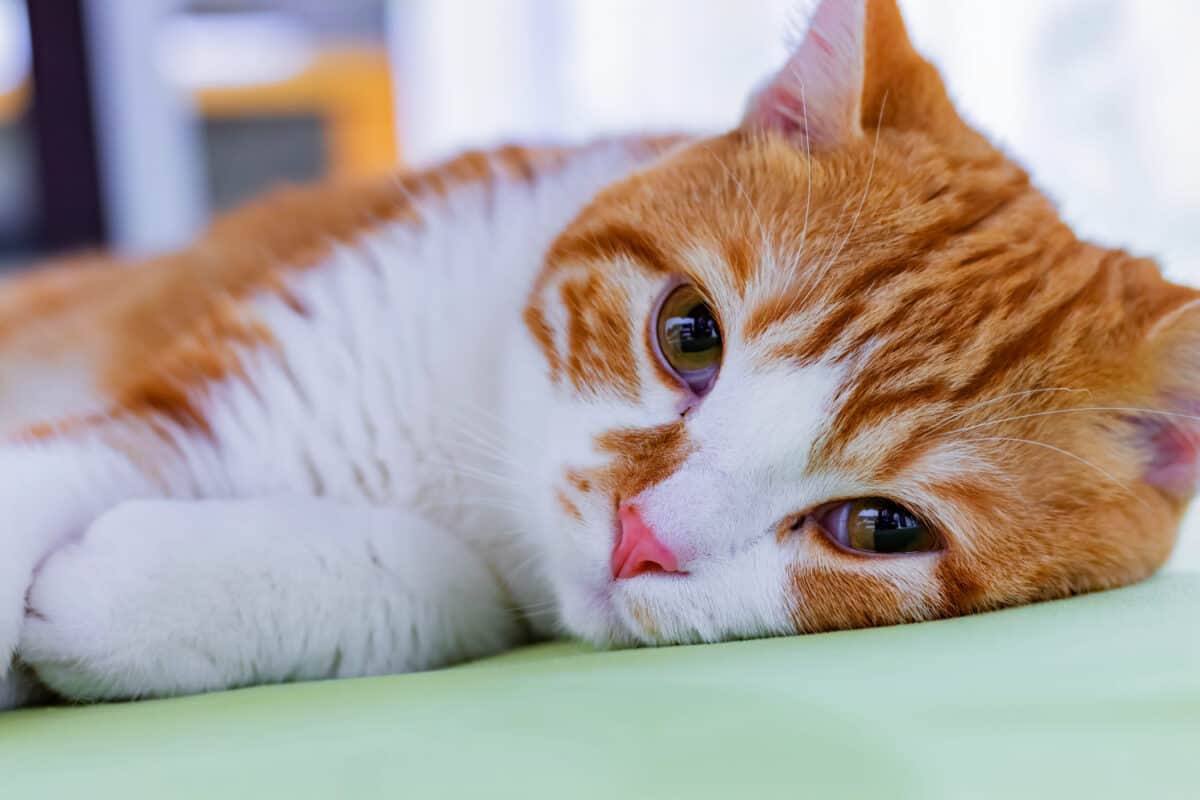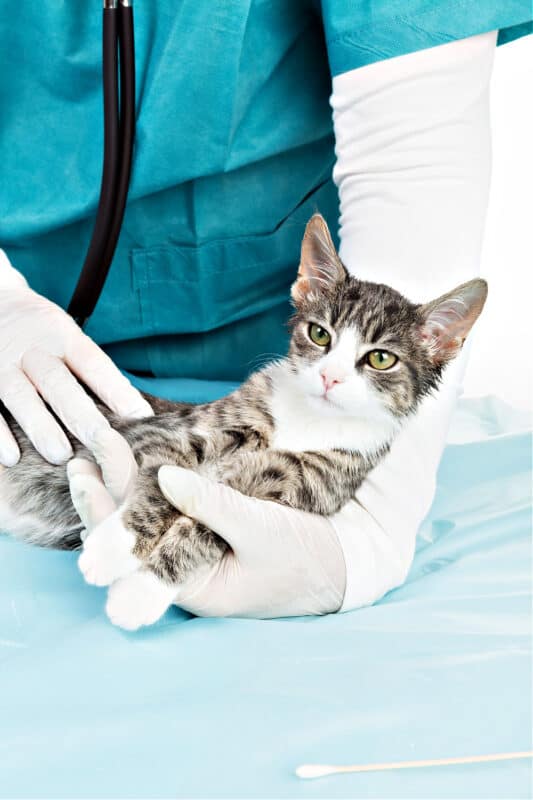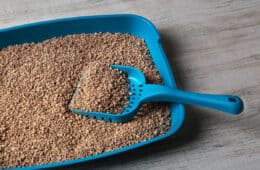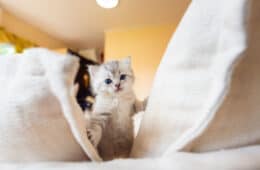Declawing a cat is a decision that carries heavy consequences. Many see it as a solution to protect furniture. However, do they understand what the procedure really means for the cat?
In this article, we'll cover the harsh reality of declawing, including the physical and mental pain it can inflict. You'll also find guidance on post-surgery care for those who have already made this choice. Additionally, you'll find alternatives that could save your cat from needless suffering.
This guide aims to equip owners with the knowledge to assist their cats in overcoming the challenges associated with declawing, whether they're facing it now or in the future.

A Controversial Procedure
TheCatSite stands firmly against declawing, recognizing it as more than a simple removal of a cat's nails. This surgery goes further, removing part of the cat's toes.
The true nature of the procedure is often misunderstood. Also, there are alternatives that are not only more humane but also easier and less expensive, to safeguard your furniture.
Despite the opposition, declawing is still endorsed by some veterinarians as a standard procedure, often paired with spaying or neutering.
Questions frequently arise in our forums about how to care for declawed cats, both in the short term and long term. Sadly, many cats that have undergone this procedure end up in shelters. This leaves new owners to grapple with their cat's resulting disability.
Pain Avoidance
A paper cut is painful when it happens, but afterward, it mainly seems that it’s in the most inconvenient place: a bendy part of the finger, the pad so you can’t type or write, a spot where it is constantly bumped.
Imagine then, if your full weight was bearing down on the cut with every step you took. Declawing a cat is major surgery, not a paper cut. It is painful, physically and mentally.
Cats jump, run, walk, dig in the litter box, and use their paws to pick up food or toys. The pain of surgery will make all of those things difficult and painful to do.
Once a situation causes pain, such as digging in the litter box, a cat will avoid the area where the pain happened—then he’s in trouble for not using the litter box too.
Post-Surgery Care Tip: Grainy litter will hurt a sensitive paw. We recommend that you substitute torn, not cut, strips of newspaper or other soft materials instead. This may be a lifelong problem.
No Walking Boot
Post-surgery complications are many. Jumping puts enormous stress on the feet since cats land front paws first. For humans, it’s estimated that each leg supports half our body weight.
Walking puts six times that weight on hips, knees, and ankles. Jumping puts about twenty times as much weight on those joints.
Kitty won’t get to wear the “boot” or special shoes as people do after foot surgery. No walkers, scooters, or crutches either. People seldom have both feet operated on at the same time.
Post-Surgery Care Tip: Lift Kitty onto and off the bed or couch. Running and playing will also be painful. So put away Kitty’s fishing pole toy, the ball with a bell, and the laser light. Settle for a calmer activity while he heals.
When Pain Won't Go Away
Even after the bandages are off, there may be problems like infection. Initial pain can still be a problem for almost two weeks after the surgery.
Kitty will avoid things that hurt him, may develop arthritis in the joints of his toes, or suffer from phantom pain as human amputees do.
Biting, either because of the pain or because he no longer can defend himself with a warning scratch, may become his new way to communicate displeasure.
Kitty is at a higher risk if he escapes from the house, too. He now has no way to defend himself.
Although most cat owners say Kitty never goes outside, a survey by the ASPCA says fifteen percent escape every year. “Cat guardians were less likely to find their cat–only 74 percent of lost cats were recovered, while 93 percent of lost dogs were recovered.
Fifty-nine percent of cat guardians found their cat because it returned home on its own; 30 percent found their cat by searching the neighborhood. Only 2 percent were found at shelters.”
Post-Surgery Care Tip: Escape-proof your home. Make sure your cat is microchipped and always wears a collar with a name tag and your phone number. Also, be aware of the increased risk for a declawed cat outdoors and be extra diligent in preventing escape.
SIGN UP FOR THECATSITE'S EMAIL UPDATES >

Growing Pain
If any bone is left during the surgery, the claw can regrow, although it’s likely to grow under the skin and then burst through, adding to Kitty’s pain and your veterinary bills.
Tendons that curl the toes no longer have an anchor. This causes frozen joints in the foot, so Kitty can’t stretch his toes, essentially leaving him with “hammertoes.”
Post-Surgery Care Tip: Keep a close eye on your cat's paws for several weeks and months after surgery. These complications may not show up right away, but they do exist. Make sure you contact your vet if you notice anything out of the ordinary.
Walking Disability
Cats have a runway-model, slinky walk that’s to be admired. After surgery, most cats will rock their body weight back onto the pads (or palms) of their feet to avoid the pain of pressure on the toes.
Some will resume their regular slinky stride after healing; for some, this becomes a new way of walking, which then causes problems with other joints in the leg. Claws also aid with balance, so Kitty may not be as “sure-footed” as before.
Post-Surgery Care Tip: As your cat ages, know that she is at an increased risk for arthritis and other joint problems. Read more about feline arthritis and joint pain in cats here.
Endless Pain
Chronic pain is hard to determine. What looks like a resting cat could very well be a cat in pain. Veterinary textbooks list the pain from declawing as severe; it is considered to be one of the most painful surgeries done.
Even when pain medication is given, cats are found to be in pain long after the surgery is complete. Pharmaceutical companies use declawed cats in clinical studies to test new pain medications for this reason.
Post-Surgery Care Tip: Discuss pain management with your vet prior to surgery. Follow through with pain medication and be aware that your cat may be in pain even when she's not showing it.
Never medicate your cat with OTC painkillers without consulting your vet! Even a small dose of Tylenol or Aspirin can be lethal for a cat! Read more about OTC medication and cats here.
Declawing is not the removal of a cat’s claws to save your couch. It’s the partial amputation of ten toes, the severing of tendons, nerves, and ligaments, physical and mental pain and anguish, and totally unnecessary surgery. No couch is worth it.
A Compassionate Alternative: Protecting Both Cats and Couches
As we've seen, declawing is a decision fraught with physical and emotional consequences, affecting not only the cat but its owner and the household. But the good news is, this drastic procedure is not the only solution to the issue of scratched furniture.
In the end, compassion, understanding, and creativity will go far further in creating a happy home for both you and your cat than resorting to a procedure as drastic and harmful as declawing.
By taking the time to understand our feline friends and provide for their needs, we can enjoy their company without sacrificing our living space.
Together, we can put an end to the practice of declawing and forge a path toward a more empathetic and humane approach to living with our cherished companions.
SIGN UP FOR THECATSITE'S EMAIL UPDATES >
Comments? Leave them using the comment section below. Questions? Please use the cat forums for those!
Note: We may get commissions for purchases made through links on this page.




15 comments on “Declawing – Post-surgery Care And Complications”